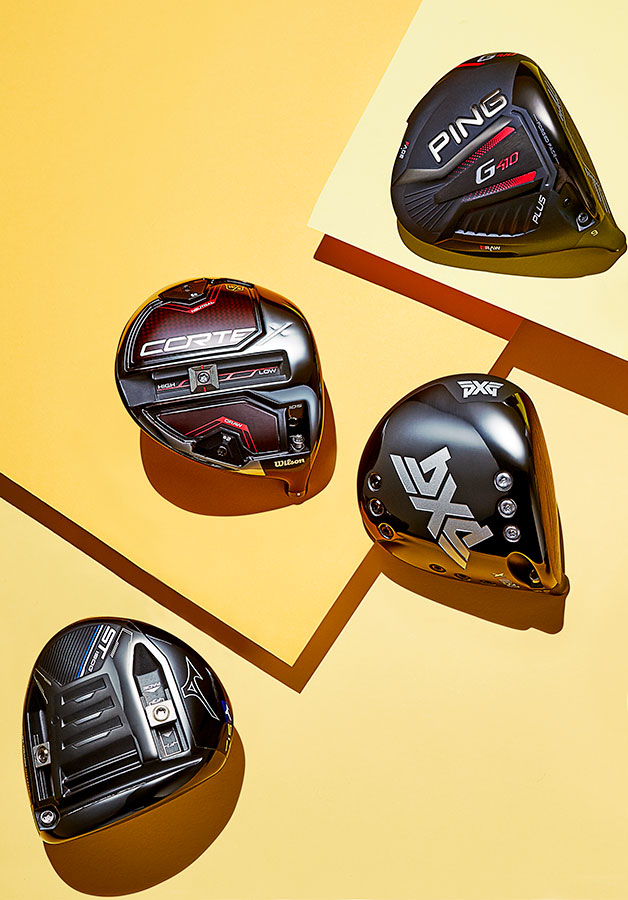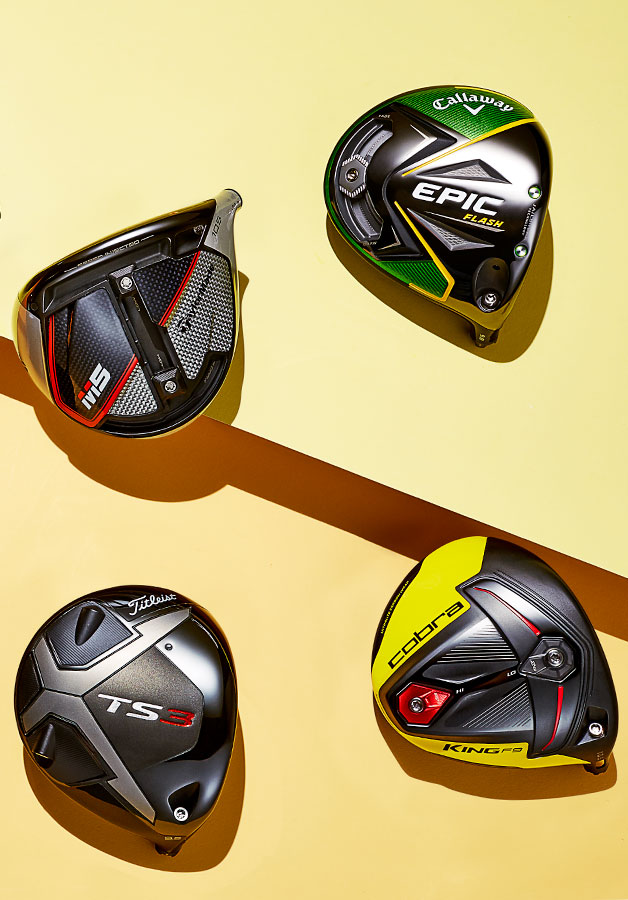Almost nobody on tour hits short drives anymore, which should encourage all of us who don’t play on TV. In 2010, almost 40 percent of drives on the US PGA Tour travelled less than 280 yards. In 2018, it was less than 25 percent. One key reason is advances in driver design. Faces are selectively thinner than they used to be, internal weighting is lower, and clubheads stay steady on mis-hits so more energy is transferred to the ball. This means good hits launch higher more easily, and mis-hits don’t fly as short or as off line as they once did. Regular golfers can benefit just as much or more from modern drivers than those who get paid to play. “I think it’s a new era for average golfers,” says TaylorMade’s Tomo Bystedt, senior director of product creation. For example, he says he has seen improvements in mis-hits on its latest drivers that are three or four times better than the gains from centre strikes. That trend is exciting news for those of us who don’t practise much.
Here are eight new drivers to consider.
Off-centre strikes go farther and straighter than they used to.

Ping G410 Plus
The company’s drivers are known for stability on off-centre hits, but now Ping offers a clubhead that combines stability with a moveable weight. The 16-gram tungsten chip fits in three spots (heel, centre and toe) to better control your mis-hits.
Wilson Cortex
The winner of Golf Channel’s “Driver vs Driver 2” trumpets adjustability, thanks to a design where nearly half the head is made of lightweight carbon fibre. There are heel and toe weights and a long central sliding track that controls launch and spin.
PXG o811 X Gen2
The carbon-fibre crown’s thicker section towards the front provides stability, almost like a brace, so the face can flex more. The crown’s light weight means more mass is redistributed low for extremely low spin.
Mizuno ST190G
The high-strength titanium alloy in the face is even more effective than in last year’s model because of a variable-thickness design that expands the area where you get the hottest hits. Parallel sliding-weight tracks let you tweak the weight to correct your hook, slice or the spin you need for optimal distance.

Callaway Epic Flash
Callaway uses artificial intelligence and machine learning for its face-design process. The variable-thickness face has a back full of rolls and ridges like a desert dunescape. Those ripples help increase ball speed over a larger area.
TaylorMade M5
The face is initially made so flexible it would be non-conforming. But an injection of resin gets it just under the legal limit. Why this process TaylorMade says it doubles the size of the hottest area of the face.
Cobra King F9 Speedback
Aerodynamic drivers like this don’t always have low centres of gravity. But here the light carbon crown wraps around the perimeter. Less weight on top and more on the bottom mean high ball speed and
low spin.
Titleist TS3
Titleist’s new driver speed project starts with a thinner-than-ever, more-flexible face. A thin crown leads to lower spin and improved perimeter weighting for more stability (and distance) on off-centre shots.




